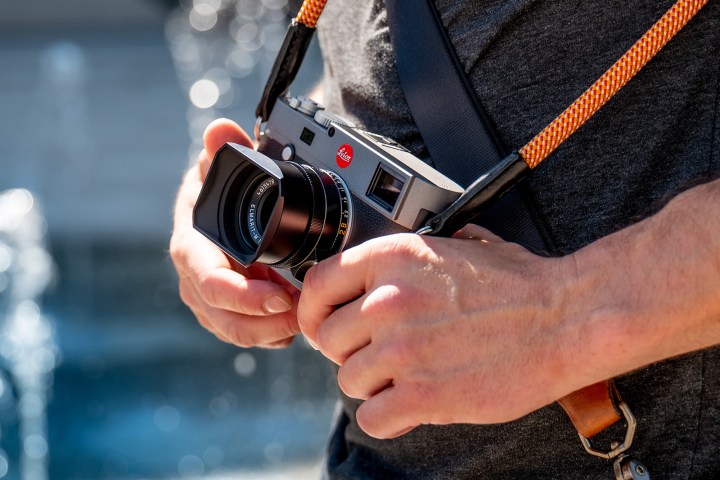
The Leica name is synonymous with luxury, but the iconic camera brand’s newest mirrorless camera boasts the most affordable body in the company’s popular M series. The upcoming Leica M-E (Typ 240) offers a full-frame sensor and faster performance in a compact rangefinder body.
While the new M-E will cost you half the price of other digital cameras in the series like the M10, it still sports a 24-megapixel full-frame sensor. The sensor captures images at up to ISO 6400. And while most entry-level cameras tend to sacrifice speed, the M-E uses a 2GB buffer to allow for extended burst shooting. Leica says the camera offers the same performance as the Leica M (Typ 240), but with a longer sustained burst thanks to an updated Maestro processor.
Video is also built in, but not at 4K — the M-E captures 1080p video.
Leica says the M-E is pared down to the essentials to allow for streamlined operation. It also retains the more discrete look of the M series favored for genres like street photography. Compared to the M10, the M-E trades the ISO dial at the top for an ISO button at the back. The body, Leica says, makes for one of the most compact full-frame cameras in the world.
Like other M series cameras, the M-E is handcrafted in Germany. The camera sports a gray color, using a paint developed specifically for the M-E, and real leather wrap. The design isn’t just about looks — the camera body is also sealed against dust and moisture. The body uses an M mount lens to accommodate almost every Leica M lens ever made.
Perhaps the most intriguing part of the camera is the price point — the Leica M-E is available for pre-order for $3,995. While that price isn’t entry level compared to other manufacturers, it is extremely low for a Leica M series model. Excluding the film cameras in the M series, the next cheapest digital camera in the series is the $7,295 Leica M10. The camera is backed by a two-year warranty.
The Leica M-E is set to go on sale July 25 from Leica stores, boutiques, and dealers.
Editors' Recommendations
- 5 reasons I love the Leica M11 camera and 5 reasons I don’t
- The sleek Leica M10 Monochrom is black and white inside and out




